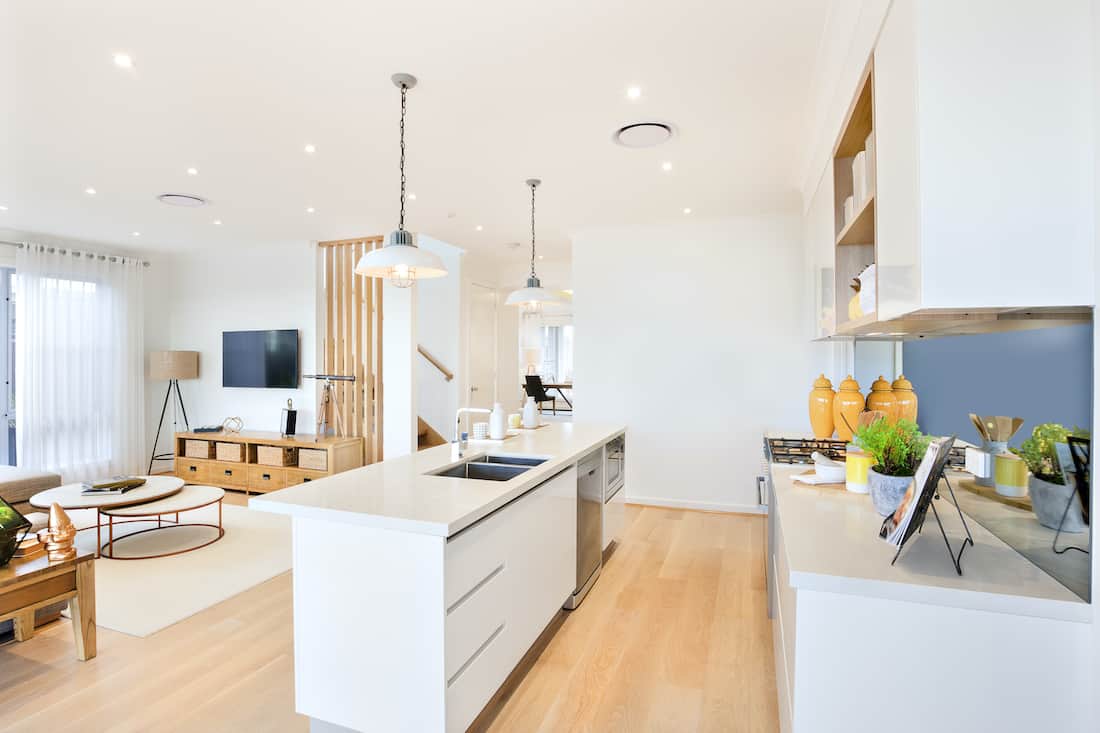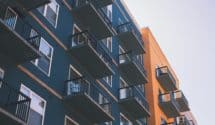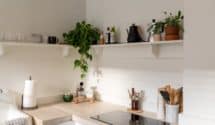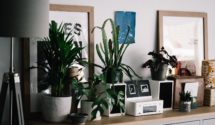Fighting Coronavirus in Your Rental: How to Clean Your Surfaces & Air
Effective testing and treatment of ill patients remain top priorities identified with the spread of Coronavirus Disease 2019 (COVID-19). For rental property owners and their tenants, maintaining clean, sanitized and disinfected surfaces and air quality should be prioritized just as high as proper handwashing in this time of global pandemic. Implementing recommended uses of cleaning products, hand sanitizers, gloves, eye protection and air cleaners has never been more essential.
For the most up to date information about COVID-19 and coronavirus, we encourage a review of recommendations from the Centers for Disease Control and Prevention (CDC).
Cleaning Surfaces to Fight COVID-19
The need for a clean property has not disappeared with stay-at-home orders across the country. Some cleaning companies that disinfect are continuing to offer essential services during this time. Others have contributed by providing practical advice and best practices to those ready to roll up their sleeves to do the needed cleaning, sanitizing and disinfecting themselves.
Cleaning vs Sanitizing vs Disinfecting – Which Do I Choose?
The CDC differentiates between important terms common to “cleaning” that should be taken into consideration for a safe environment:
- Cleaning – This process focuses on removal of germs, dirt, and impurities from surfaces or objects. It is most commonly performed by using soap or detergent and doesn’t work to kill germs, but to remove them. Through removal, germ numbers are lowered, along with the risk of spreading infection.
- Sanitizing – By cleaning or disinfection surfaces, they may become sanitized, lowering “the number of germs on surfaces or objects to a safe level, as judged by public health standards or requirements.” This adds to a lower risk of spreading infection.
- Disinfecting – Considered the strongest method, this kills germs on surfaces or objects. Through the use of approved chemicals, germs are eliminated. Disinfectants do not remove dirt, so cleaning remains an essential step that must be completed before disinfecting. Disinfecting can further lower the risk of spreading infection.
“Using the correct disinfectant is an important part of preventing and reducing the spread of illnesses along with other critical aspects such as hand washing.”
Andrew Wheeler, EPA Administrator
EPA’s List of Disinfectants for Use Against COVID-19
The US Environmental Protection Agency (EPA) updated and released its approved list of disinfectant products, searchable by product name, to use in the fight against Coronavirus. EPA Administrator Andrew Wheeler noted, “EPA is providing this important information in a public and transparent manner on disinfectant products to help reduce the spread of COVID-19.”
Some of the more popular and recognizable disinfectant products that are approved on “List N: Disinfectants for Use Against SARS-CoV-2” include:
- Clorox Disinfecting Wipes
- Clorox Multi Surface Cleaner + Bleach
- Clorox Commercial Solutions
- Clorox Disinfecting Spray
- Lysol Heavy-Duty Cleaner Disinfectant Concentrate
- Lysol Disinfectant Max Cover Mist
- Lysol Clean & Fresh Multi-Surface Cleaner
- Purell Professional Surface Disinfectant Wipes
- Sani-Prime Germicidal Spray
CDC Recipe for Preparing a Bleach Solution at Home
The CDC recommends preparing a bleach solution by mixing:
- 5 tablespoons (1/3rd cup) bleach per gallon of water or
- 4 teaspoons bleach per quart of water
Which Cleaning Practices Do Industry Professionals Recommend?
In her recently published Corona Ready Cleaning Course, Melissa Homer, Chief MaidPro Cleaning Officer, takes viewers through the most important steps on how to clean in a COVID-19 world, all designed with the safety of all parties in mind. For anyone entering and cleaning a property occupied by others, she recommends the following best practices and products for safety:
Have a Hand Hygiene Plan When Entering Tenant Properties
The importance of knowing and following a hand sanitation strategy when moving from your own property to another cannot be overlooked.
Homer’s essential hand hygiene steps include:
- Wash your hands before you leave for your property
- Sanitize your hands in the car before entering a different property
- Clean homes by disinfecting “high touch points” like handles and doorknobs
- Remove gloves when finished and wash your hands in the sink before leaving
- Exit the home and sanitize hands once again before opening car doors or trunk space.
Disinfection Takes Time to Do It Correctly
Echoing the recommendation of the CDC, Homer insists that you absolutely must clean the dirt away before you disinfect. That’s step one of the process, and skipping that step provides an open door for contaminants like viruses to continue flourishing.
She also notes that a commitment of time is required to sanitize and disinfect correctly:
- Sanitization – 5 Minutes of application / drying time
- Disinfectants – 10 Minutes of application / drying time
With certain products, you should allow extra time to wash and rinse the area after the disinfectant dry time has been reached. Some disinfectants were designed to target commercial properties like hospitals, and leaving a disinfectant unrinsed in some cases could pose its own risks, especially in food environments. Follow the CDC guidelines and well as manufacturer recommendations for your cleaning products.
What Should Be Disinfected In the Home?
So what specifically should your efforts go toward when disinfecting? The CDC hones in on “high touch surfaces,” those frequently touched areas around the property. These would include:
- Tables
- Doorknobs
- Light Switches
- Countertops
- Handles
- Desks
- Phones
- Keyboards
- Toilets
- Faucets
- Sinks
- Other High Touch Surfaces
Proper Use of Protective Equipment While Cleaning
Among the most important recommendations for combating the spread of COVID-19, three main types of protective equipment take the spotlight:
- Gloves – Watch the How To Remove Gloves video from RegisteredNurseRN.com. The CDC says to “Wear disposable gloves when cleaning and disinfecting surfaces. Gloves should be discarded after each cleaning. If reusable gloves are used, those gloves should be dedicated for cleaning and disinfection of surfaces for COVID-19 and should not be used for other purposes.”
- Masks – Watch the WHO Video on proper use of masks. Also note that the CDC now recommends cloth face coverings as a minimum for all interacting in a public setting.
- Safety Glasses and Goggles – The CDC does have a number of recommendations to control exposure to infections. The use of safety glasses and goggles also helps to serve as a reminder to stop touching the face, one of the biggest culprits in the spread of coronavirus.
Cleaning Air to Combat Coronavirus
The air we breathe in our homes and rental properties cannot be ignored during this crisis, when stay-at-home orders mean we are exposed to all the is and remains inside our walls. Even without such orders, the EPA notes that “Americans, on average, spend approximately 90 percent of their time indoors, where the concentrations of some pollutants are often 2 to 5 times higher than typical outdoor concentrations.”
In most circumstances, “air purifying devices are intended for medical purposes to kill pathogens/microorganisms in the air by exposure to UV radiation or remove them through filtration.” For use in homes, a number of devices, strategies and steps can be implemented to create safer, cleaner air in the ongoing fight against viruses, bacteria and colds.
“Taking measures to improve ventilation in an area or room where someone was ill or suspected to be ill with COVID-19 will help shorten the time it takes respiratory droplets to be removed from the air.”
The Centers for Disease Control
Air Cleaning Options for Rental Properties
Some of the most popular systems and strategies to clean air in homes include:
- HEPA Air Purifiers – High Efficiency Particulate Air (HEPA) filters are found in many air purifiers and boast the ability to “remove at least 99.97% of dust, pollen, mold, bacteria, and any airborne particles with a size of 0.3 microns (µm). As an electronic device, HEPA air purifiers force air through a very fine mesh where the contaminants become trapped.
- Air Cleaners – The term air cleaner is really a catch all for devices that work to remove fine particulate matter associated with respiratory distress, allergic reactions and asthmatic episodes. So that’s the pollen, dust, mold spores, and bacteria. Many claim to remove 95 percent of these particulates. The most common air cleaners include whole-house air filters, UV germicidal lights, electronic precipitators and ion generators.
- Air Scrubber – These devices came into play as a “variation of technology originally developed in cooperation with NASA to create a safe atmosphere for astronauts on the International Space Station.” A Kansas State University study reported up to a 99 percent reduction of surface micro-organisms. That’s a significant removal of bacteria, mold, smoke, and other impurities from the air.
- Duct Cleaning – Through the use of a kind of vacuum for air ducts known as a Negative Air Machine, these devices target bacteria, dust, and other allergens and prevent the heating and air conditioning systems from circulating that bad air.
While the EPA “does not recommend relying on an air purifier to protect from COVID-19 in residential settings,” they nonetheless serve an effective purpose during a time when remaining as clean and germ free as possible is essential.
At a time when cleaning solutions have become critical, owners and renters are urged to implement a number of effective strategies to keep surfaces and air as clean, disinfected and safe as possible.
Other Helpful Links:
- Hand Sanitizer Use Guidelines from the FDA
- Heating, Ventilating and Air-Conditioning Recommendations from EPA






Write Your Comment